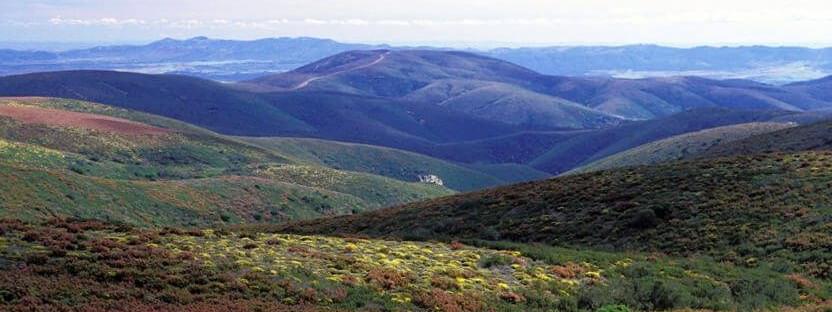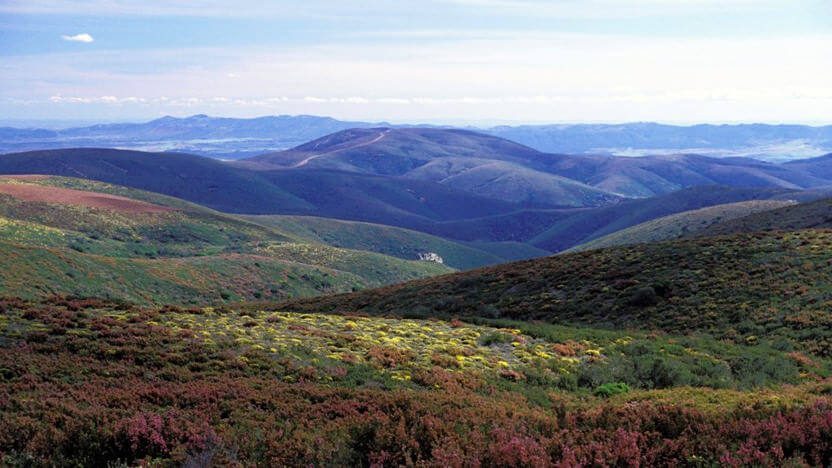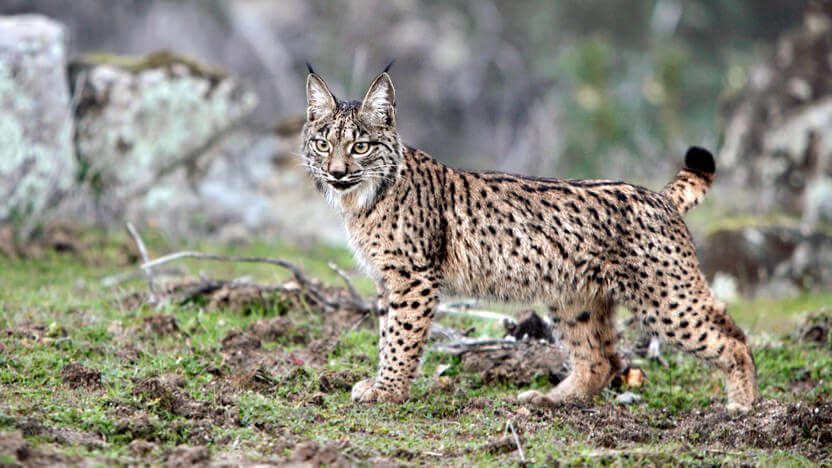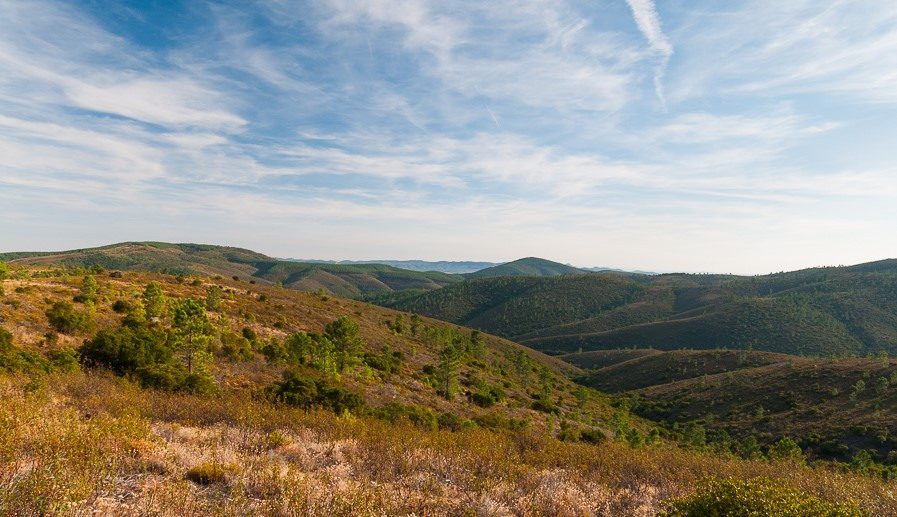It is still possible to walk through an incomparable landscape, where there’s little human presence, discover rare animals at each step and admire flora which reminds us of old Mediterranean woods at Serra da Malcata Natural Reserve.
Serra da Malcata Nature Reserve with its 16,348 hectares is an unknown princess, home to at least three nests of the black vulture (Aegypius monachus), a critically endangered species. And there are riparian woods along the Ribeira da Bazágueda, the Rio Côa and the Ribeira da Meimoa.
Woods and meadows of Malcata is a unique trail on the Northern border of the Natural Reserve. This trail starts in the banks of Côa river, namely in Fóios, very close to Sabugal - in the beginning of the Great Route of Côa Valley. It crosses 135 km into the left bank of Douro River across a landscape of black oaks (Quercus pyrenaica) and marshlands.
With an average height of 800 Metres, situated 1 hour and 30 minutes away from Castelo Branco, between Penamacor and Sabugal, this Natural Reserve was created in 1981, as the result of the national "Let's save the Lynx and the Serra da Malcata".
Later, the relics of its Mediterranean forest led to its classification as a Council of Europe Biogenetic Reserve.
Flora & fauna
In Malcata, to the south, the forests of black oak (Quercus pyrenaica) dominate. But there is also holm oak (Quercus rotundifolia) and cork oak (Quercus suber). Alders live in the water courses. There are temporary Mediterranean ponds and communities of caldon trees (Echinospartum ibericum), an endemic species of the Iberian Peninsula.
Strawberry trees are also very vast. They are one of the most characteristic formations in this area, covering some slopes in a profuse or disperse manner. Some of these stands are formed by strawberry trees (Arbutus unedo) with a tree crown, reaching a height of 8 metres. With a very long flowering period, its flowers appear in autumn, at the same time as the fruiting occurs. It is common to see flowers and fruits at the same time on the same plant.
And there are Narcissus triandrus that carry an infinite delicacy! We dare to think that they are recognised by the Black Storks (Ciconia nigra) and perhaps by the Griffon Vultures (Gyps fulvus).
A land of pure enchantment !
Location
Google Maps

















